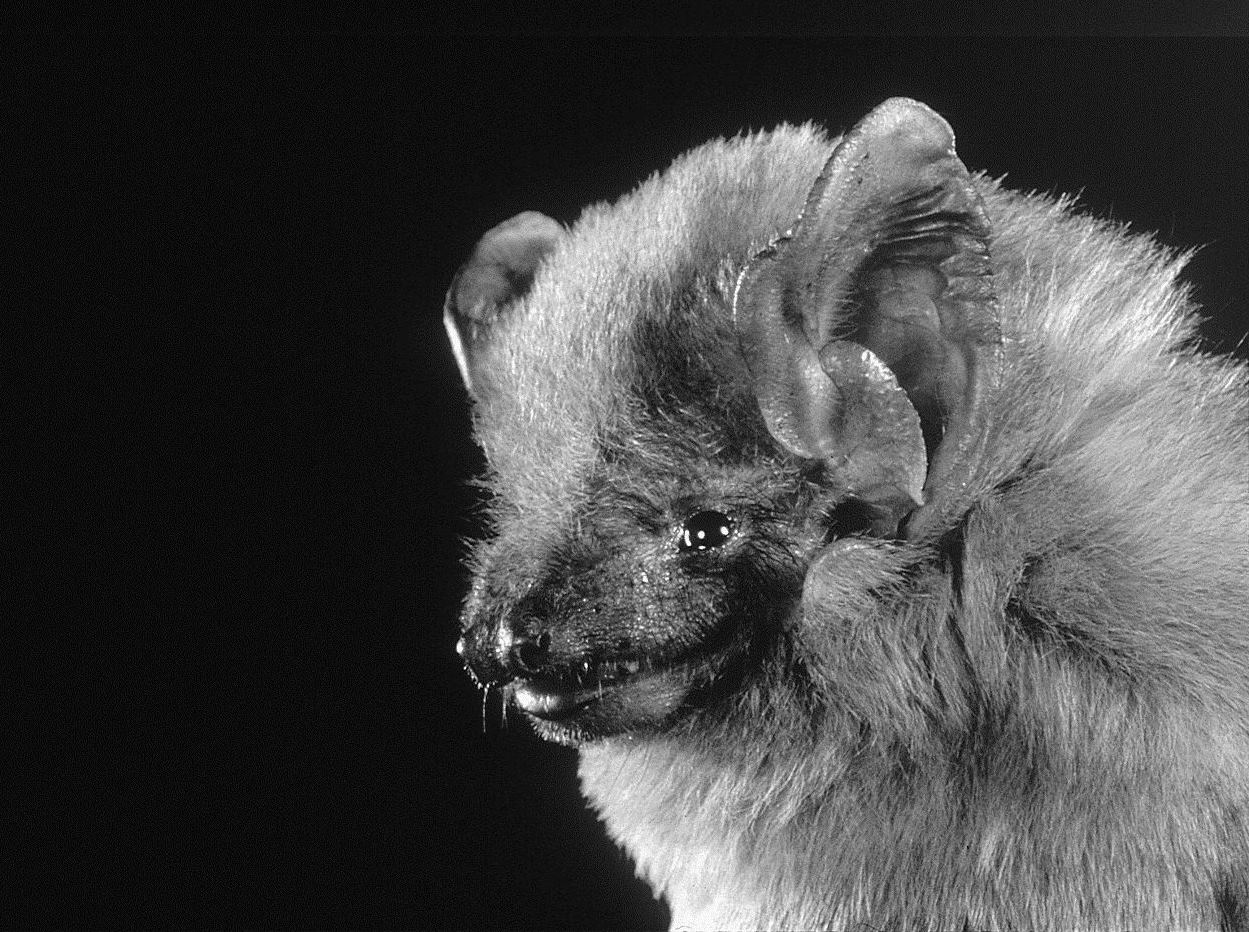SOUTHERN YELLOW BAT
Dasypterus ega (Gervais 1856)
Order Chiroptera : Family Vespertilionidae
DESCRIPTION. A yellowish-brown bat similar to Dasypterus intermedius but smaller. Dental formula: I 1/3, C 1/1, Pm 1/2, M 3/3 × 2 = 30. One of the best characteristics to distinguish D. ega from D. intermedius is the length of the maxillary tooth row; in ega it is <6 mm, in intermedius >6 mm. Averages for external measurements: total length, 118 mm; tail, 51 mm; foot, 9 mm; forearm, 47 mm. Weight, 10–15 g.

DISTRIBUTION. This is a Neotropical species that reaches the United States in southern California, southern Arizona, and southern Texas, where it has been recorded from seven counties in the lower Rio Grande Valley. Two recent records from Comal and Fayette counties have extended its range to the north. The range of this small yellow bat extends southward east of the Andes to Uruguay and northeastern Argentina.

SUBSPECIES. Dasypterus e. panamensis.
HABITS. Like other members of the genus Dasypterus, southern yellow bats are associated with trees that can provide them with daytime roosting sites. In the vicinity of Brownsville, numbers of them inhabit a natural grove of palm trees (Sabal texana). Dasypterus ega may be a permanent resident in that area; they have been captured there in six different months of the year, including December. These bats may be increasing their range in Texas as the use of ornamental palm trees in landscaping increases. Southern yellow bats have been found roosting with northern yellow bats (D. intermedius) in ornamental palms in Nueces County.
These bats feed on insects that they probably capture in flight. Bats observed in the Mexican state of San Luis Potosi started foraging about dusk. Nets stretched over ponds where bats came to drink did not catch any D. ega until about 2 hours after darkness. Stomachs of those captured at that time were crammed with insect remains.
The breeding season is in late winter in the South Texas area. Six females captured in late April all carried embryos; one had two very small embryos (3 mm crown–rump length), and the other five had three embryos each, with crown–rump lengths ranging from 11 to 14 mm. Of 11 females captured on 8 June, only 1 was pregnant. She contained four embryos, whose average crown–rump length was 25 mm. Nine of the other 10 females were lactating. Three females captured in June in the neighboring Mexican state of Tamaulipas also were lactating.
POPULATION STATUS. Uncommon, year-round resident. The southern yellow bat is an uncommon bat with a restricted distribution from the southernmost part of Texas, where it occurs around Brownsville and in other parts of the Rio Grande Valley northward to Corpus Christi. It roosts in the dead fronds of tall palm trees, and the species would be threatened only if such habitats were destroyed or in danger of destruction.
CONSERVATION STATUS. The IUCN status of the southern yellow bat is least concern. The USFWS does not include this bat on its list of endangered or threatened species, but TPWD has listed it as threatened because of its limited distribution in the southern part of the state. The primary threat to this species would be the removal of potential roost sites by trimming dead palm fronds in residential areas where the species is known to occur.
Remarks. The application of the generic name Dasypterus for the yellow bats (previously included in the genus Lasiurus) follows the work of Amy Bickham Baird and John Bickham, as described in the account of Lasiurus blossevillii.
From The Mammals of Texas, Seventh Edition by David J. Schmidly and Robert D. Bradley, copyright © 1994, 2004, 2016. Courtesy of the University of Texas Press.
Natural Science Research Laboratory
-
Address
Museum of Texas Tech University, 3301 4th street, Lubbock, TX 79409 -
Phone
806.742.2486 -
Email
nsrl.museum@ttu.edu

